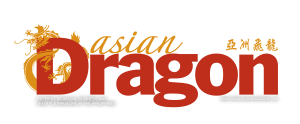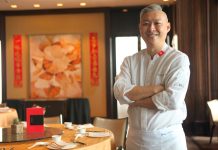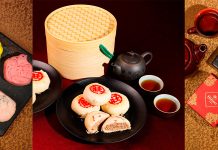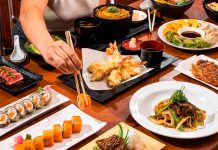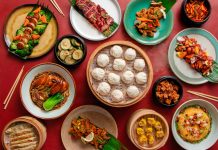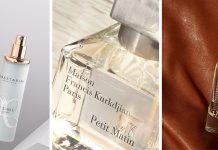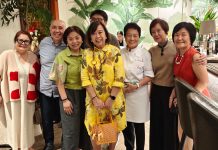The backstory of hybrid rice in the Philippines is the story of businessman and agritech pioneer Henry Lim Bon Liong’s amazing journey, as he tells it—a story of determination and serendipity, as well as tragedy and triumph. This is the story of Henry Lim Bon Liong as told to Asian Dragon Magazine’s Apa Ongpin.
“In 1997, if you had asked me what was the price of a kilo of rice in the market, I wouldn’t even have known. I had no idea of the difference between dinorado and sinandomeng.
“Erap (Joseph Estrada) was Vice President at that time. I am quite close to him. He had no portfolio, so he would wake up very late in the morning, and after lunch, he would call up some of his friends to come over. I would go to his house; it was just here in Greenhills. I don’t smoke, I can’t drink, and I don’t play pusoy or mahjong. So we would just talk. One day, he became very serious, and he said, ‘Henry, if ever I become the President of the Philippines, I would like to make agriculture my top priority. We should learn from China. They have a very big population, yet, they are even able to export their grains.’
“This aroused my curiosity. I did some research, and I found out that China has 22 percent of the entire world’s population, but only seven percent of the arable land in the world. How can seven percent arable land area feed a 22 percent population? In 1997, China already had a population of 1.2 billion of the world’s six billion. Today it has 1.4 billion out of a total 7.2 billion already.
“I researched back to 1949, the year the Communist Party liberated China. China at that time was producing less than 110 million metric tons of grains per year. By the year 2000, China was producing more than 500 million metric tons of grain. But at that time, as the Western economists predicted, in the ’50s, ’60s and ’70s, more than 10, 20 million people in China died of hunger every year. It was revealed to me by the Vice Governor of Fujian province, in charge of agriculture, that in the year 1963 alone, 43 million people died of hunger in China. China before was ‘behind the bamboo curtain,’ so all the bad news was being suppressed. But it’s all starting to come out now.
“The Chinese government at that time advocated widespread farming, even with very low yield. They cut down all the trees in the forests and planted them with rice. Grasslands were burned and planted to rice. Lakes were reclaimed and planted to rice. But it wasn’t enough. They had to resort to the one-child policy, population control, rationing, and food coupons.
“The Prime Minister of China came here in 1998, Zhu Rong Zhi. I was privileged to be invited to have lunch with him—it was a big group. He told us, ‘You know, even if we do not produce a single grain of rice in China, we will not go hungry. We have over 500 million metric tons of grains in our warehouses.’ In fact, he had a terrible headache trying to find more storage to accommodate all the surplus. Every time he would go out in the field, and see farmers in the mountainsides planting rice, he would tell them to stop planting rice.
“Now they are planting trees to replace the forests, planting grasslands as pasture for cattle, and restoring the old lakes. In the past few years, they had returned between 6 and 7 million hectares back to the forests, to the grasslands, to the lakes.
“So what was the secret?
“In 1998, Erap finally became president. Within 30 days, he sent his first Secretary of Agriculture, William Dar, and his Secretary of Agrarian Reform, Boy Morales, to China, along with some members of the Federation of Filipino-Chinese Chambers of Commerce. They were gone for a month. When they came back, I asked them, ‘O, what did you learn? Do you know anyone by the name of Professor Yuan Long Ping?’ They shook their heads. Didn’t ring a bell. ‘So what were you doing in China? Did you not know that Professor Yuan Long Ping is considered a National Treasure in China? He is the father of hybrid rice. He is worth $50 billion because of his contribution to China, in agriculture. His stature is even higher than Deng Xiao Ping.’
“At that time, they said, there were two Pings in China. If you want prosperity, you rely on Deng Xiao Ping, who modernized China and opened it up to the world. If you want to eat rice, you rely on Professor Yuan Long Ping.
“I was introduced to Professor Yuan Long Ping in early 1998, through a common friend. We struck up a friendship, and he showed me what he was doing. I said, ‘Do you want to step out of China? Do you want me to be your stepping stone?’ He said, ‘China has so much rice already.’
“At that time, I was an entrepreneur. We were in the paper business, industrial properties, and we had a chain of department stores, a chain of Expressions outlets, call centers. Agriculture was farthest from my mind. [Henry Lim Bon Liong is the chief executive officer of the Sterling Paper Group of Companies, S.P. Properties Inc., and later, SL Agritech Corporation].
“My friend told me, ‘Henry, do you know that you are very lucky?’ I said, ‘Why?’ He said, ‘Do you know that Monsanto, one of the Fortune 500 companies, invited the professor to be their adviser? He refused. Mahathir and other Asian countries have invited the professor to go there, he showed no interest. Even Li Ka-Shing, the richest man in Hong Kong, he’s the richest man in Asia right now, he’s starting rice research in the Southern part of China. He asked the Professor to head it; again, he showed no interest.’
“Again, I am an entrepreneur, and I know that one of the biggest risks of being an entrepreneur is not to take risks at all. You must take risks, although calculated ones. Professor Yuan Long Ping wanted me to be his stepping stone outside of China. So I accepted the challenge…”

Read more about how Henry Lim Bon Liong perfected the hybrid rice inside Asian Dragon Magazine’s June-July issue. Grab your copy from all leading bookstores nationwide or purchase the issue from the Asian Dragon Magazine App, free to download on Google Play Store, iTunes, and Amazon.
[Photograph: Patrick Uy]

